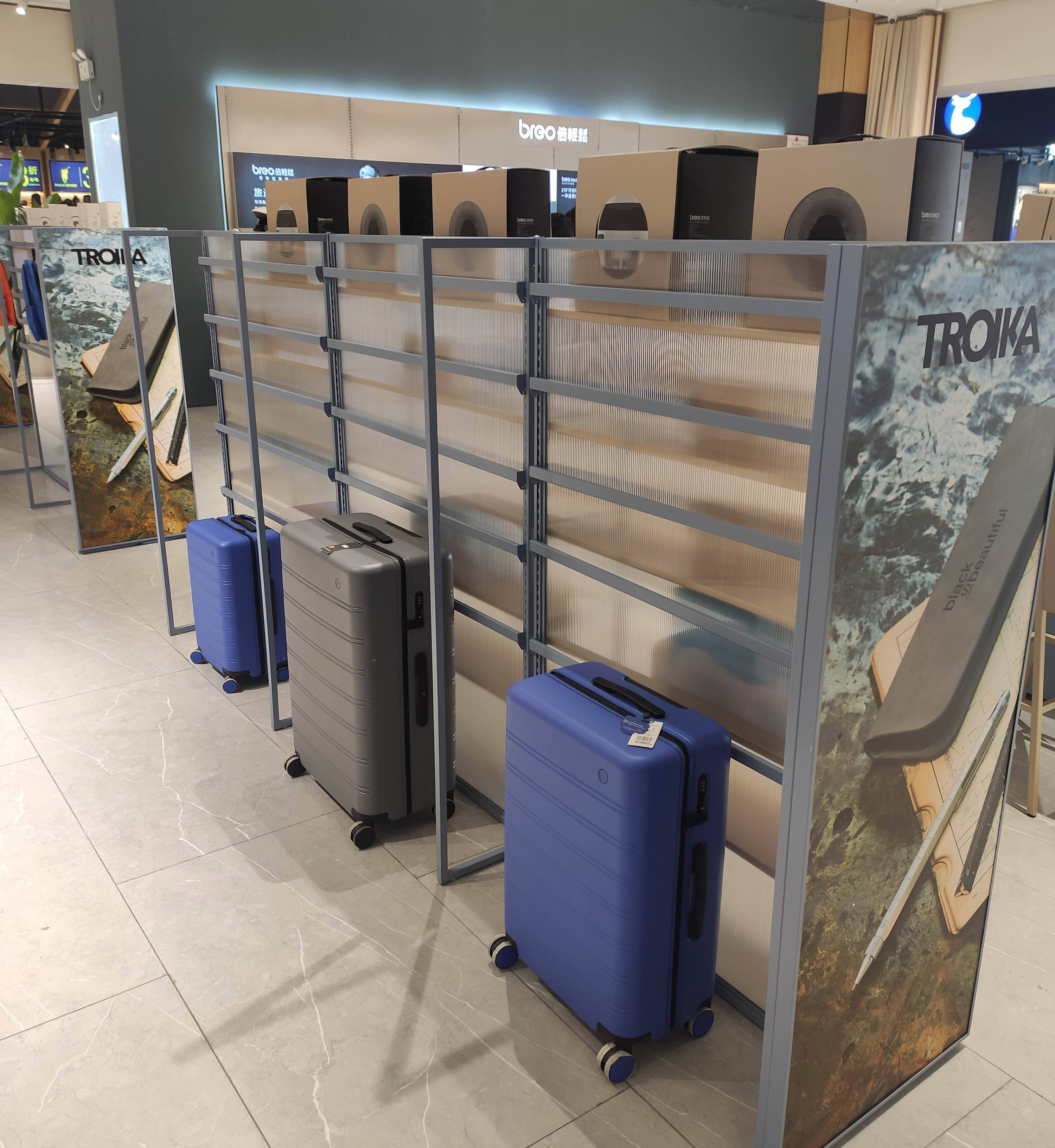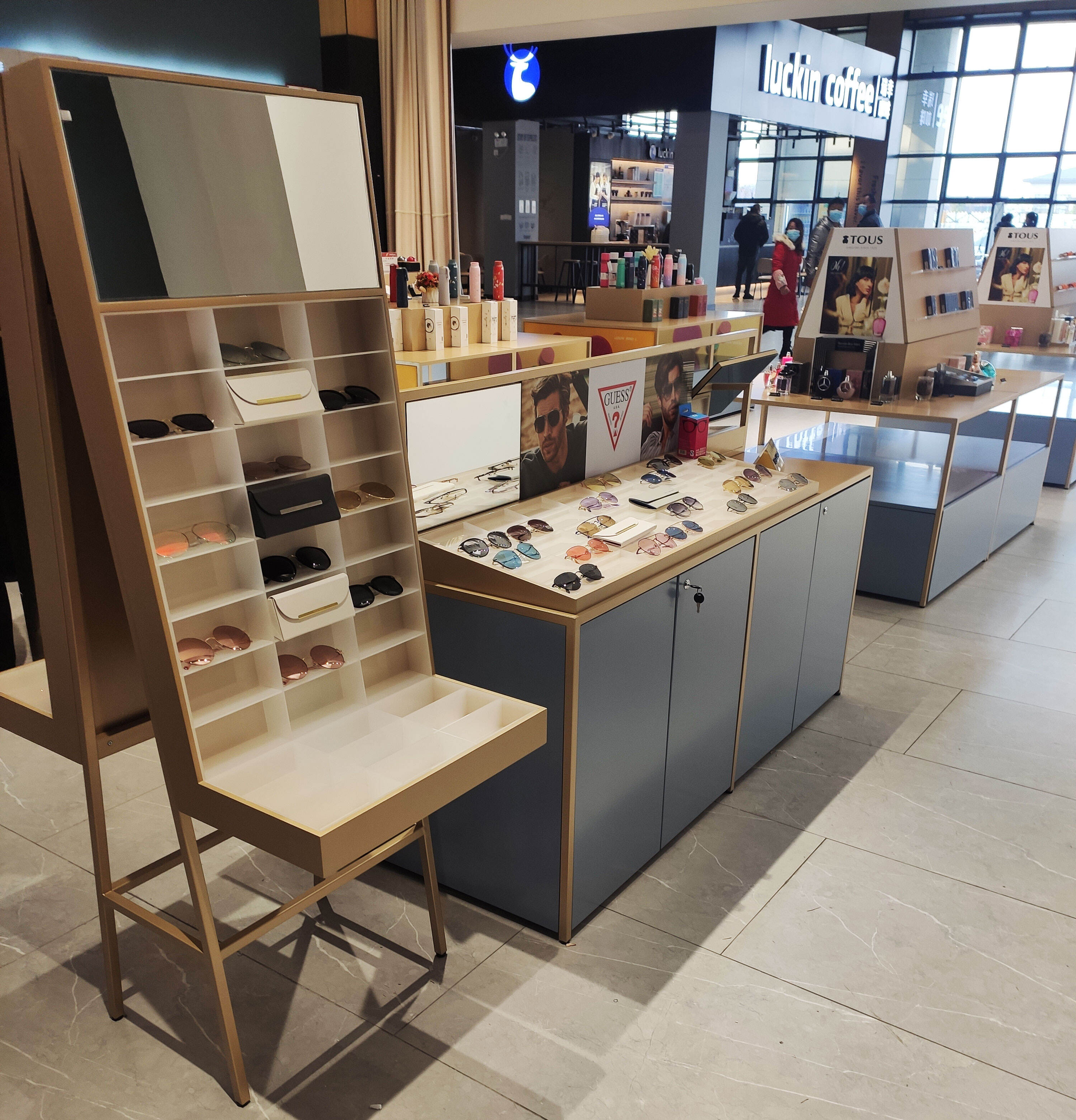What Are the Benefits of Modular Display Shelving Systems?
In the fast-changing world of retail, adaptability and efficiency are two qualities that determine long-term success. Store layouts, product assortments, and consumer expectations constantly evolve, requiring businesses to find display solutions that are both functional and flexible. One innovation that has revolutionized store design and product presentation is modular display shelving systems. These systems combine practicality, durability, and customization, making them one of the most effective merchandising tools available to modern retailers.
Unlike traditional shelving, which is often fixed in size and structure, modular display shelving systems allow retailers to adjust configurations, heights, and styles according to their needs. Whether used in supermarkets, boutiques, electronics stores, or trade shows, these shelving systems provide businesses with unparalleled versatility while enhancing the shopping experience. This article explores in depth the many benefits of modular display shelving systems and why they are becoming the go-to choice for retail environments.
Understanding Modular Display Shelving Systems
Modular display shelving systems are designed with interchangeable components that can be easily assembled, disassembled, or reconfigured. They typically consist of frames, shelves, connectors, and accessories that fit together in a flexible design. Retailers can add or remove sections, adjust shelf heights, or integrate branding elements without replacing the entire structure.
These systems are widely used in retail, exhibitions, warehouses, and even office environments. Their modularity makes them cost-effective and highly adaptable to changing business needs.
Benefits of Modular Display Shelving Systems
Flexibility and Adaptability
The most obvious benefit of modular display shelving systems is their flexibility. Retailers can adjust shelves to accommodate products of varying shapes and sizes, from small cosmetics to large electronics. This adaptability is particularly valuable for seasonal displays or promotional campaigns where product assortments change frequently.
For example, a clothing store can easily transition from winter jackets to summer wear by adjusting shelf configurations and adding hanging racks. A supermarket can reorganize shelving to promote holiday products without investing in new fixtures. This flexibility allows businesses to stay agile in response to shifting market demands.
Cost-Effectiveness
Traditional shelving often requires significant investment, especially if frequent changes or expansions are necessary. Modular display shelving systems reduce costs by allowing retailers to reuse and reconfigure existing components instead of purchasing new units.
Because they are durable and reusable, modular systems provide long-term savings. Businesses can adapt layouts over time without recurring expenses, making them a cost-effective solution for both large chains and small independent retailers.
Enhanced Visual Merchandising
Presentation is key in retail, and modular display shelving systems provide opportunities for creative merchandising. Their adjustable design allows for varied shelf heights, display angles, and the integration of signage or lighting. This flexibility enables retailers to highlight products more effectively and create visually appealing displays that draw customer attention.
For instance, a modular shelving system can be designed to feature premium products at eye level, with complementary items arranged nearby to encourage cross-selling. Visual merchandising strategies are easier to execute when shelving can be tailored to match brand identity and customer preferences.

Space Optimization
Retail space is one of the most valuable assets for any store, and modular display shelving systems maximize its use. Their customizable nature allows businesses to design layouts that make the best use of available floor space.
Shelving can be configured to fit corners, walls, or even freestanding islands, ensuring no space goes to waste. Adjustable shelves also allow retailers to optimize vertical space, storing larger products below while highlighting smaller, high-margin items at eye level.
Durability and Strength
Modular display shelving systems are typically made from high-quality materials such as steel, aluminum, or reinforced plastic. This ensures they can withstand heavy loads, frequent use, and the demands of busy retail environments. Their strength makes them suitable for a wide range of products, from heavy hardware tools to delicate glassware.
Durability reduces the need for frequent replacements, making modular shelving a reliable investment. With proper maintenance, these systems can last for many years while maintaining their functionality and appearance.
Easy Assembly and Reconfiguration
One of the key advantages of modular display shelving systems is the ease of assembly. Unlike traditional shelving that often requires professional installation, modular systems are designed for quick setup. Retailers can assemble or reconfigure them with minimal tools, saving time and labor costs.
This ease of reconfiguration is particularly beneficial for businesses that frequently change layouts, such as exhibition halls or pop-up shops. Being able to adapt quickly provides a competitive edge in fast-paced environments.
Branding and Customization
Modular display shelving systems can be customized to reflect brand identity. Retailers can choose colors, finishes, and accessories that align with their store’s aesthetic. Graphics, signage, and lighting can also be integrated into the shelving, creating a cohesive shopping experience.
Customization not only reinforces branding but also helps differentiate the store from competitors. A well-designed modular shelving system becomes part of the overall brand experience, leaving a lasting impression on customers.
Improved Customer Experience
The adaptability of modular display shelving systems allows retailers to create layouts that improve customer flow and enhance the shopping experience. Organized displays make products easier to find, while visually appealing arrangements encourage exploration.
By adjusting shelving to suit customer needs, retailers can reduce clutter and make shopping more enjoyable. For example, placing popular items at convenient heights or grouping related products together can streamline the purchasing process.
Scalability for Growing Businesses
As businesses expand, modular display shelving systems grow with them. Retailers can add new components or reconfigure existing ones to accommodate increased inventory or larger retail spaces. This scalability eliminates the need for complete overhauls when expanding, providing both convenience and savings.
Applications of Modular Display Shelving Systems
These systems are versatile and can be applied in numerous settings.
In supermarkets, they are used to display groceries, household goods, and seasonal items. In clothing stores, modular shelves can integrate racks, mannequins, and folded displays. Electronics retailers use them to showcase devices with integrated cable management and security features. Trade shows benefit from modular displays that can be quickly assembled, branded, and dismantled for reuse. Even in offices, modular shelving provides efficient storage and display for documents, samples, or promotional materials.
Sustainability and Environmental Benefits
Sustainability is a growing concern in retail, and modular display shelving systems contribute positively. Their reusability reduces waste, while many manufacturers use recyclable materials in production. Because they can be repurposed for different campaigns, modular systems minimize the need for single-use displays, aligning with eco-conscious business practices.
Retailers that adopt sustainable shelving solutions also appeal to environmentally conscious consumers, enhancing their brand reputation and aligning with global sustainability goals.
Future Trends in Modular Display Shelving
The future of modular display shelving systems lies in greater integration with technology and sustainable practices. Smart shelves with sensors can track inventory in real-time, alerting staff when restocking is needed. Interactive digital displays can provide product information or promotions directly on the shelving.
Sustainability will also remain a key driver, with manufacturers increasingly focusing on recyclable materials and energy-efficient production. Modular designs will become even more customizable, offering greater opportunities for personalization and brand expression.
Conclusion
Modular display shelving systems represent one of the most effective solutions for modern retail environments. Their adaptability, cost-effectiveness, and ability to enhance visual merchandising make them indispensable for businesses seeking to remain competitive. By optimizing space, reinforcing branding, and improving the customer experience, these systems go beyond simple functionality to become strategic tools for growth.
Their durability, scalability, and sustainability ensure that they are not only practical but also future-ready. As retail continues to evolve, modular display shelving systems will play a central role in helping businesses adapt quickly to new challenges and opportunities.
FAQ
What are modular display shelving systems?
They are shelving solutions made from interchangeable components that can be assembled, disassembled, or reconfigured to suit different retail needs.
Why are modular shelving systems cost-effective?
They reduce the need for frequent replacements by allowing retailers to reuse and reconfigure components instead of buying new fixtures.
Can modular display shelving systems be customized?
Yes, they can be tailored with colors, finishes, signage, and accessories to reflect brand identity and store aesthetics.
Are modular display shelving systems durable?
Yes, they are typically made from strong materials such as steel or aluminum, ensuring long-term reliability even in busy retail environments.
How do modular display shelving systems improve customer experience?
They allow retailers to create organized, visually appealing layouts that make products easier to find and encourage exploration, leading to a more enjoyable shopping experience.




